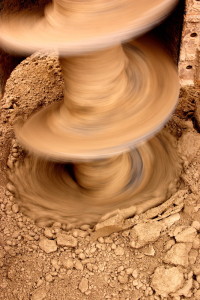Don’t Forgo The Soil Sampling

 Occasionally we run into a building owner that regards soil sampling and testing as an unneeded extra expense and asks if we can forgo this effort. Generally, soil is sampled by using a drill rig that bores into the ground up to 40-feet, or more deep. Small samples of the various soils that are found at different levels or strata are taken to a laboratory for testing to determine the composition of the soil, moisture content, and other properties.
Occasionally we run into a building owner that regards soil sampling and testing as an unneeded extra expense and asks if we can forgo this effort. Generally, soil is sampled by using a drill rig that bores into the ground up to 40-feet, or more deep. Small samples of the various soils that are found at different levels or strata are taken to a laboratory for testing to determine the composition of the soil, moisture content, and other properties.
In the field, the various soil types encountered are visually classified according to accepted standards and stiffness of the soil at different depths of the boring. These engineering properties are necessary to determine the type of foundation needed for a retaining wall or building, depth of a storm water infiltration facility, or even in the selection of a proper pavement profile.
Nearly all local municipalities will require soil testing for structural retaining walls (over 3-feet tall), storm water infiltration facilities, and buildings. We routinely obtain soil borings to help evaluate suspected building settlement conditions to learn the impact that the soil may have on the apparent building movement and help design the foundation underpinning repairs. If soil is not sampled and tested for its engineering properties, unexpected expenses can arise and the job progress can stop after the excavation begins and unsuitable soil layers are found.
